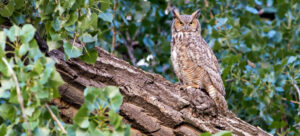by Geetha Iyer
The evolution of insects
About 500 million years ago (MYA), the Earth experienced a remarkable evolutionary event. Called the Cambrian explosion, it resulted in the emergence of a plethora of life forms – some gigantic, others small; some that lived on land and others that occupied water.
Around 412 MYA (in a time period called the Devonian), insects made their first appearance. Giant insects – some with wingspans of 2.3 feet – inhabited the earth. Evolutionary biologists believe that for nearly 100 million years, they may well have been the top predators.
And then came the most devastating mass extinction that the earth has ever witnessed: the Permian-Triassic (P-T) extinction event, around 251 MYA. It wiped out nearly 90 percent of all life forms. The extinctions continued for nearly 12 million years, and the insects took a massive beating.
Eight orders of insects were completely wiped out and 10 insect orders lost a majority of their species. Biologists believe that 30 percent of the insects that existed then were lost, some without even leaving a trace of their existence.
The surviving orders, however, adapted and evolved to occupy every possible nook and corner of the planet. Most modern-day insects originated in the aftermath of the P-T extinction. The parallel proliferation of plant species further assisted their expansion. Together, insects and flowering plants populated the earth.
Insects have survived colossal geological events such as mega-monsoons, fluctuating temperatures, volcanic activities, massive earthquakes and changing concentrations of oxygen in oceans and of carbon-dioxide in the atmosphere. When large creatures such as the dinosaurs and mammoths were dying out in the ensuing extinctions, the insect community endured, surviving the ice ages, comet hits and, possibly, even a nearby supernova explosion.
And now, once again the insects are being challenged by, what scientists call, the sixth extinction event.
Why are bees important?
Worldwide, there are nearly 25,000 species of bees from 4000 genera described. In India, it is estimated that there are likely 1000 species present.
In India, many crops are pollinated by wild bees. These include not only wild honey bees, carpenter bees, bumble bees and the leaf-cutter bees of the family Megachilidae but also rare ones from the families Andrenidae, Colletidae and Melittidae. There is no clear data on the composition of bees from India.
According to Gallai et al., 2009, more than 40 percent of honey bees have disappeared during the last 25 yrs in India.
Bees are not the only pollinators although they have received some attention. While 73 percent of crop pollinators are bees, close on their heels come flies and moths, followed by wasps, beetles
What is causing
Habitat change, pesticides in agriculture,
Why do we need to monitor insect decline?
According to Indian entomologist, C.A. Viraktamath, “There are some insects that maintain only small populations. These are like indicator species as they are the first ones to disappear when the environment changes.” He gives the example of bark lice that breed only on tree lichens. Lichens disappear when air pollution levels rise. With trees being cut regularly, the bark lice’s chances of survival are very poor.
Mongabay India




